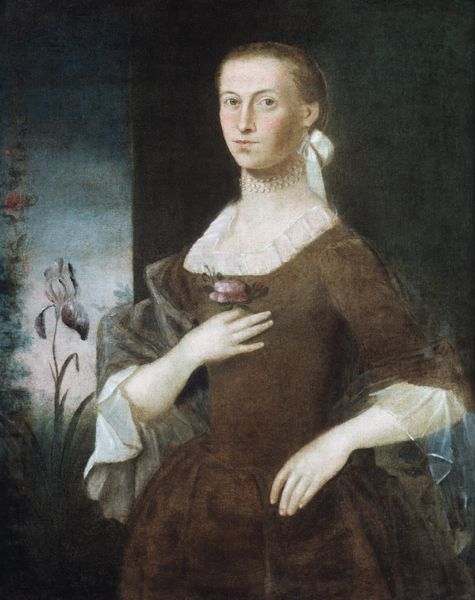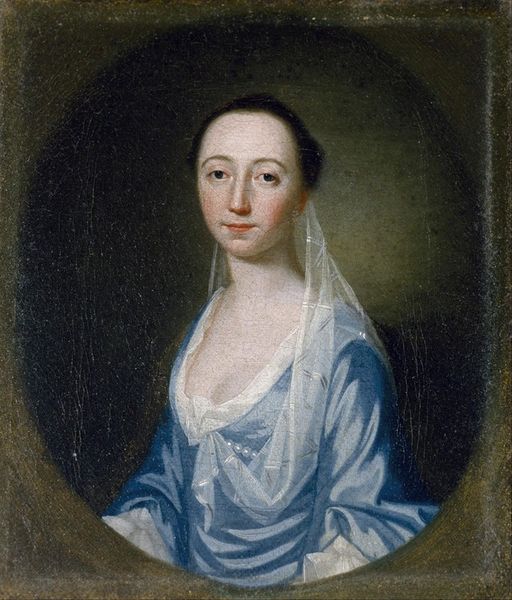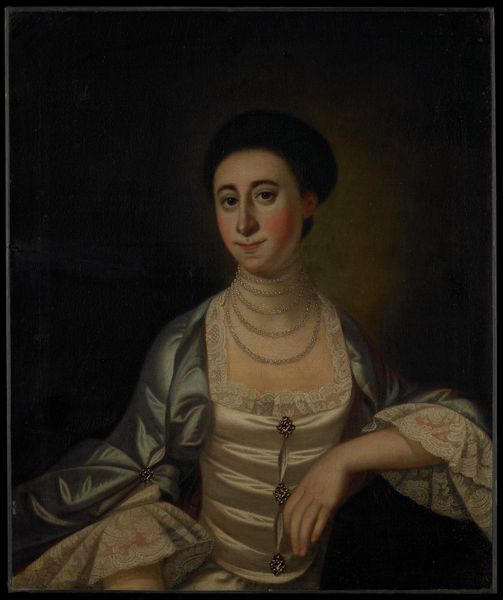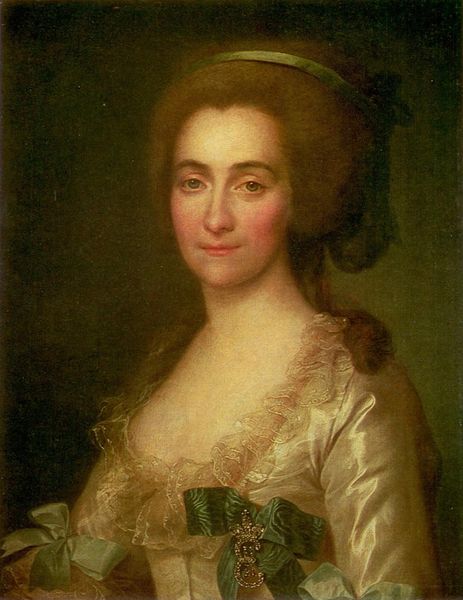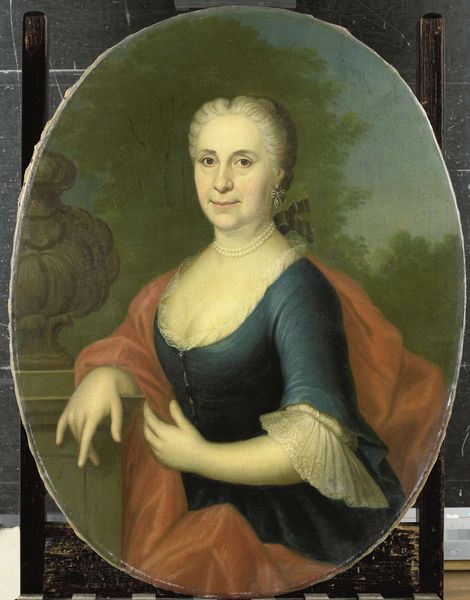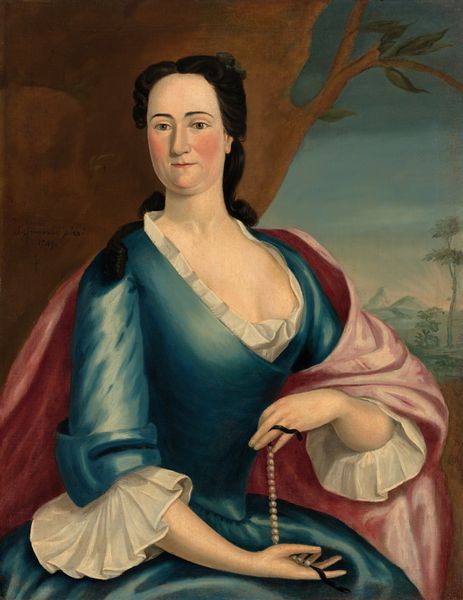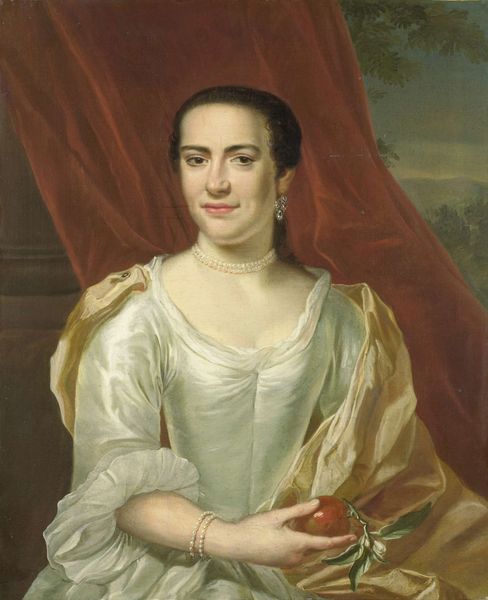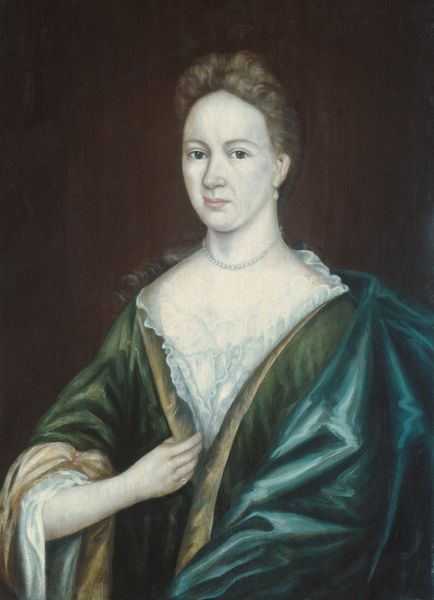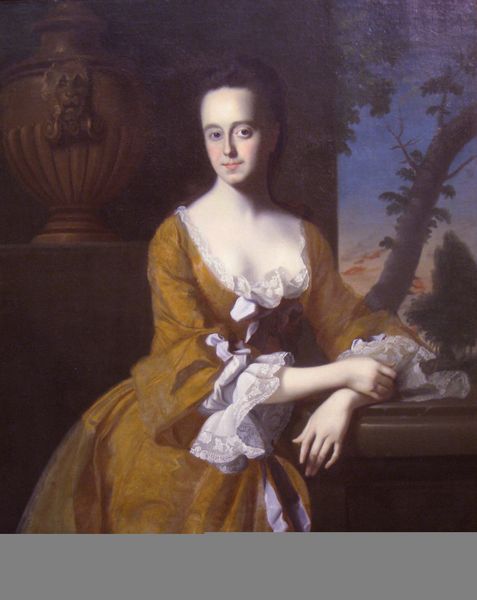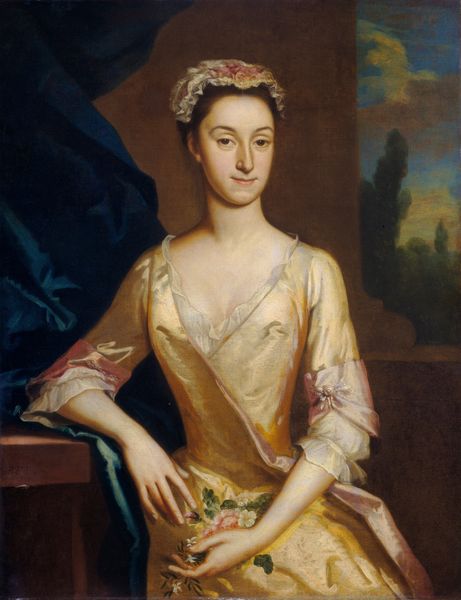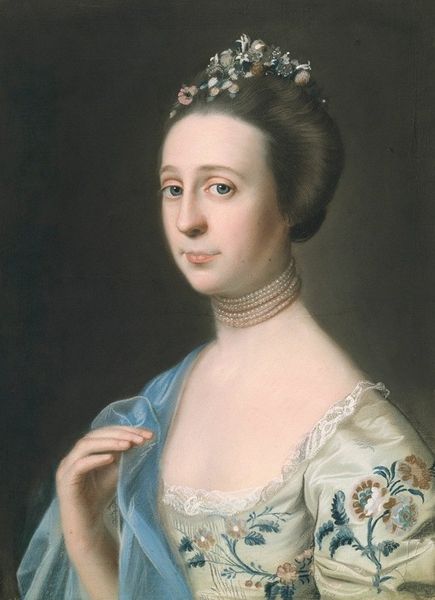
painting, oil-paint, canvas
#
portrait
#
venetian-painting
#
painting
#
oil-paint
#
figuration
#
oil painting
#
canvas
#
15_18th-century
#
genre-painting
#
history-painting
#
rococo
Copyright: Public Domain
Curator: Before us is a canvas rendering a "Portrait of Marchesa Concina di Udine," crafted by Pietro Longhi, though we are unable to confidently assign it a year. Editor: My first impression is one of subdued elegance; a muted color palette and a somewhat austere composition draw my eye. There's a softness to it, yet also a formality. Curator: Absolutely, the composition lends itself to the portrait tradition but I agree, it does not offer all of its secrets easily. The dark book she holds feels quite important; in my view, it symbolizes intellect and status, markers of Marchesa Concina’s elevated social standing. But there is also a bit of secrecy in how closely it is guarded. Editor: I’d argue that the book, while suggestive, also serves a purely structural function. Longhi’s juxtaposition of the dark volume against the Marchesa’s light garment anchors the composition and draws the eye back to center. The chiaroscuro here provides both drama and balance. Note, too, the precise, almost mathematical rendering of the folds in her dress. Curator: I'm drawn to the head covering itself, which, against the social backdrop of 18th century Venice, would signal a complex array of social codes. Marchesa Concina seems, if I am not mistaken, as veiled and hidden away as her expression makes her out to be. Editor: That might be, or perhaps the somber mood emerges from Longhi's technique, layering thin glazes of oil paint to build luminosity and depth. The modeling is subtle but impactful. We have in place here an instance of how Venetian painting achieves remarkable texture while still feeling light and airy. Curator: Seeing past the aesthetic treatment, it strikes me: is the painting itself enacting an expectation of class and of gender roles? How might its meaning differ from present times? Editor: Perhaps it asks us to consider the very function of portraiture. In Longhi’s Rococo era, what are we expected to read in a Marchesa's presentation? Curator: It's the kind of face that lingers; its enigmatic character resonates through time. Editor: Indeed, and regardless of what we ascribe to it, we can all appreciate the craft in such a subtle composition.
Comments
No comments
Be the first to comment and join the conversation on the ultimate creative platform.
